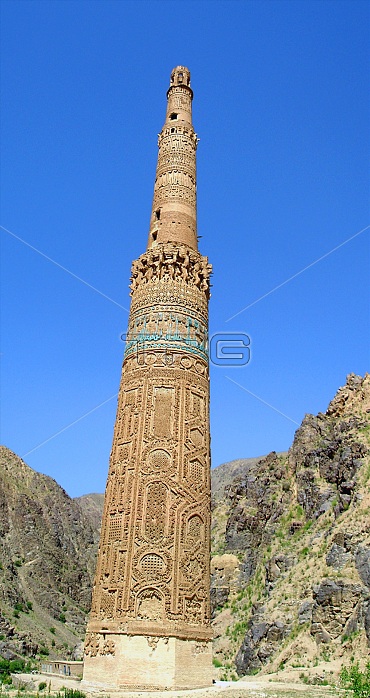
The Minaret of Jam is a UNESCO World Heritage Site in western Afghanistan. It is located in the Shahrak District, Ghor Province, by the Hari River. The 65-metre high minaret, surrounded by mountains that reach up to 2400m, was built in the 1190s, entirely of baked-bricks. It is famous for its intricate brick, stucco and glazed tile decoration, which consists of alternating bands of kufic and naskhi calligraphy, geometric patterns, and verses from the Qur'an (the surat Maryam, relating to Mary, the mother of Jesus).
For centuries, the Minaret was forgotten by the outside world until rediscovered in 1886 by Sir Thomas Holdich, who was working for the Afghan Boundary Commission. It did not come to world attention, however, until 1957 through the work of the French archaeologists Andr矇 Maricq and Gaston Wiet. Later, Werner Herberg conducted limited surveys around the site in the 1970s, before the Soviet invasion of 1979 once again cut off outside access.
The archaeological site of Jam was successfully nominated as Afghanistan's first World Heritage site in 2002. It was also inscribed in UNESCO's list of World Heritage in Danger, due to the precarious state of preservation of the minaret, and results of looting at the site.
The circular minaret rests on an octagonal base
| px | px | dpi | = | cm | x | cm | = | MB |
Details
Creative#:
TPG32690757
Source:
達志影像
Authorization Type:
RF
Release Information:
須由TPG 完整授權
Model Release:
No
Property Release:
No
Right to Privacy:
No
Same folder images:

 Loading
Loading